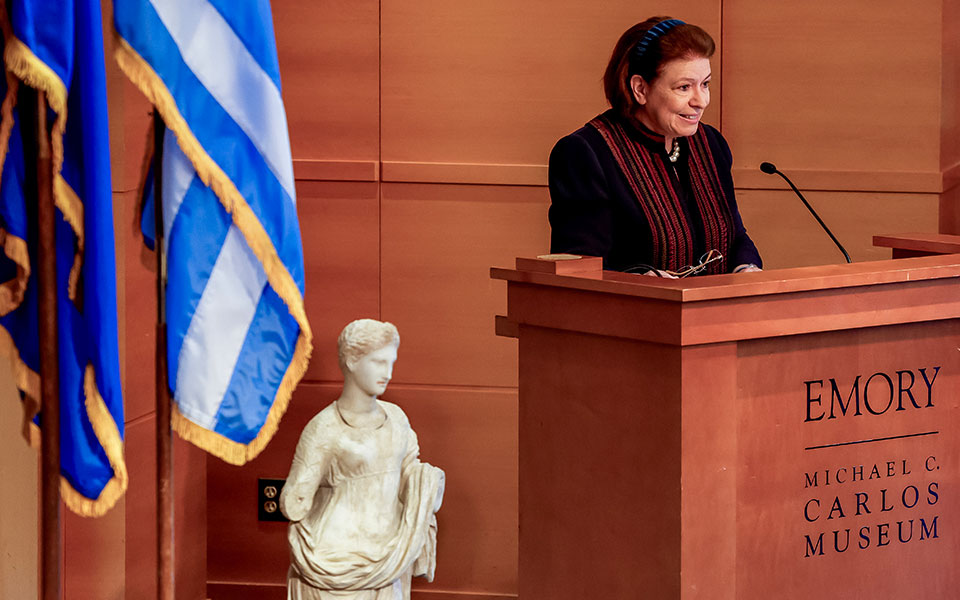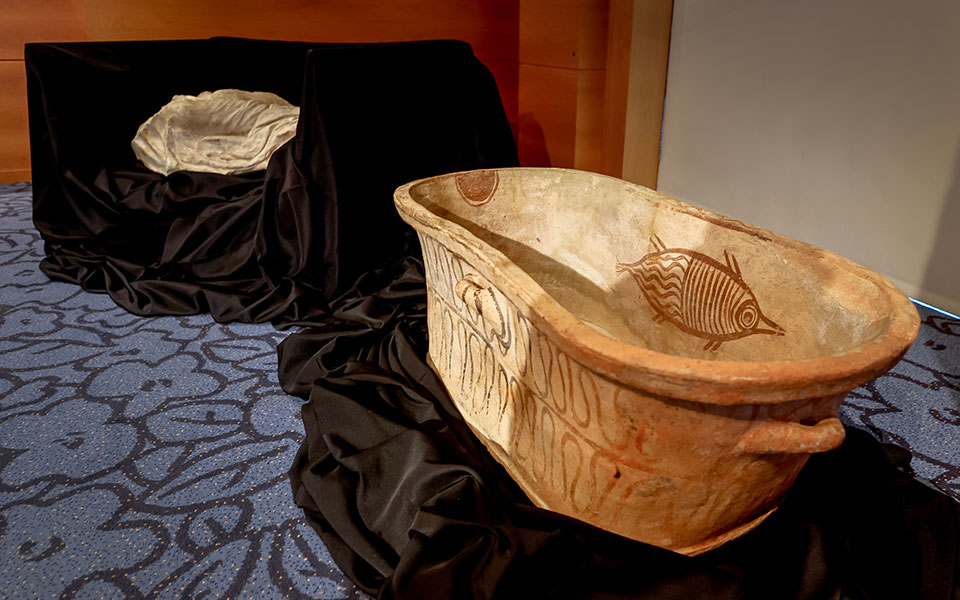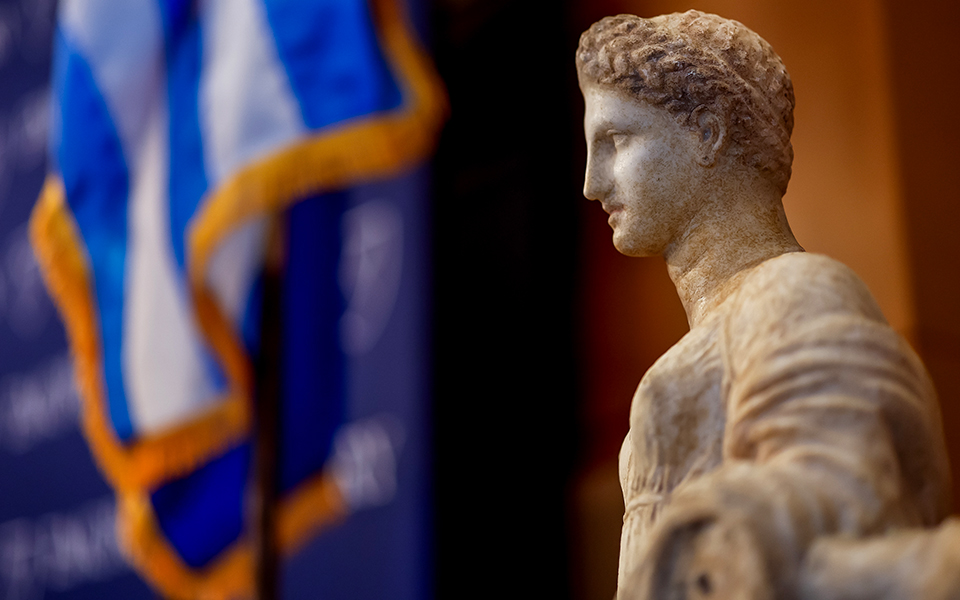In a formal repatriation ceremony at Emory University’s Michael C. Carlos Museum in Atlanta earlier this week, Greece’s Minister of Culture, Lina Mendoni, took receipt of three ancient artifacts on behalf of the Greek nation, illegally excavated and trafficked to the US decades earlier by antiquities smuggling rings.
At the ceremony, attended by high-ranking university officials and dignitaries, the Carlos Museum returned a 14th-century BC Minoan “larnax” (a clay bathtub-shaped coffin) from Crete, a seated, headless marble figure from an Attica funerary site, dated to the third quarter of the 4th century BC, and, from Epirus, a well-preserved marble statue of the muse Terpsichore, from the 2nd century BC. All three artifacts were acquired by the Museum in the early 2000s.
Following an extensive investigation by the Ministry of Culture, in close collaboration with specialist researchers, concerns were raised regarding the provenance of the artifacts prior to their purchase by the US-based museum, prompting questions over its “aggressive” collecting practices.
The antiquities were purchased by the Museum in a bid to bolster its ancient Greek and Roman Collection, thanks to a $10-million endowment from businessman Michael C. Carlos. In recent years, Emory University has amassed a vast collection of ancient art, boasting over 6,500 Greek, Roman, Etruscan, Cypriot, and Bronze Age Aegean artifacts in its inventory. Nevertheless, according to a 2023 analysis by the US-based Chronicle of Higher Education, well over 500 items in the Museum’s collection have been tied to owners and sellers linked to the illegal trade in antiquities.

© EPA/Erik S. Lesser
Illicit Trafficking
Speaking to Kathimerini, forensic archaeologist Christos Tsirogiannis, head of the Illicit Antiquities Trafficking working group of the UNESCO Chair on Threats to Cultural Heritage and Heritage-related Activities at the Ionian University, confirmed he has identified hundreds of artifacts in the Museum’s collection that have come from illegal excavation sites in Greece and Italy.
Since 2007, Greece’s Ministry of Culture has been in possession of documentary evidence questioning the provenance of the three antiquities repatriated this week. At the time, the Carlos Museum responded by saying that the pieces had been acquired in compliance with international guidelines. According to a letter provided by Tsirogiannis, head curator Bonnie Speed wrote in August 2007: “we have no evidence that the provenance of these pieces is improper.”
However, Tsirogiannis’ research strongly indicated that the Terpsichore statue and the Minoan larnax had been looted from Greece. The statue of the muse, still bearing faint traces of the original paint, had been purchased in 2002 by New York-based art dealer Robert Hecht, a known figure in the illicit antiquities trade. Similarly, polaroid pictures of the larnax, taken in 1989, were found in the personal archive of renowned antiquities trafficker Gianfranco Becchina, who was subsequently convicted by a Greek court in 2017.
Tsirogiannis went on to raise concerns about the seated, headless marble figure, purchased by the Carlos Museum in 2003 from Michael Ward, another New York art dealer convicted of criminal facilitation last year.
Following the investigations, a formal repatriation request for the three antiquities was submitted by the Greek Ministry of Culture via diplomatic channels to the Carlos Museum in 2021.

© EPA/Erik S. Lesser
A New Era of Cultural Cooperation
Despite ongoing questions about the provenance of hundreds of other artifacts in the Museum’s inventory, in a statement, Henry S. Kim, the Carlos’s director since 2022, called the repatriations the beginning of “many years of expanded cultural cooperation between the Ministry and Emory.”
The deal struck by the two parties will create opportunities for Emory students, faculty, and staff to take part in excavations in Greece, and for the Carlos to team up with museums in Greece on loans and exhibitions, according to the museum.
“We hope that other museums abroad will follow the example of the Carlos Museum, which has sought to solve the problem through dialogue and a spirit of cooperation,” added Greek Culture Minister, Lina Mendoni.
The three antiquities are on their return journey Greece, where they will be presented to the public, before being transferred to the museums of their regions of origin.
With information in Greek from kathimerini.gr.












